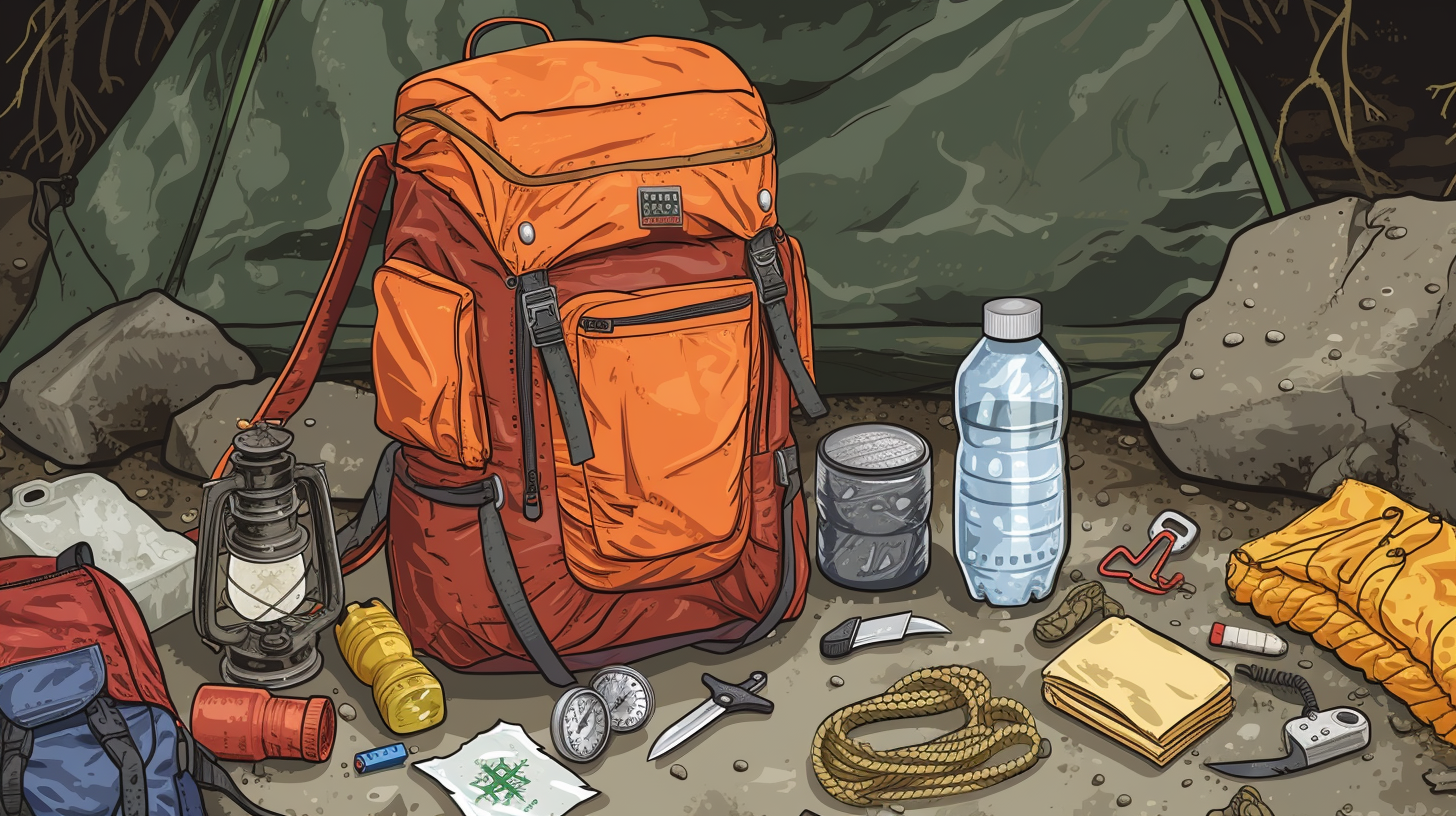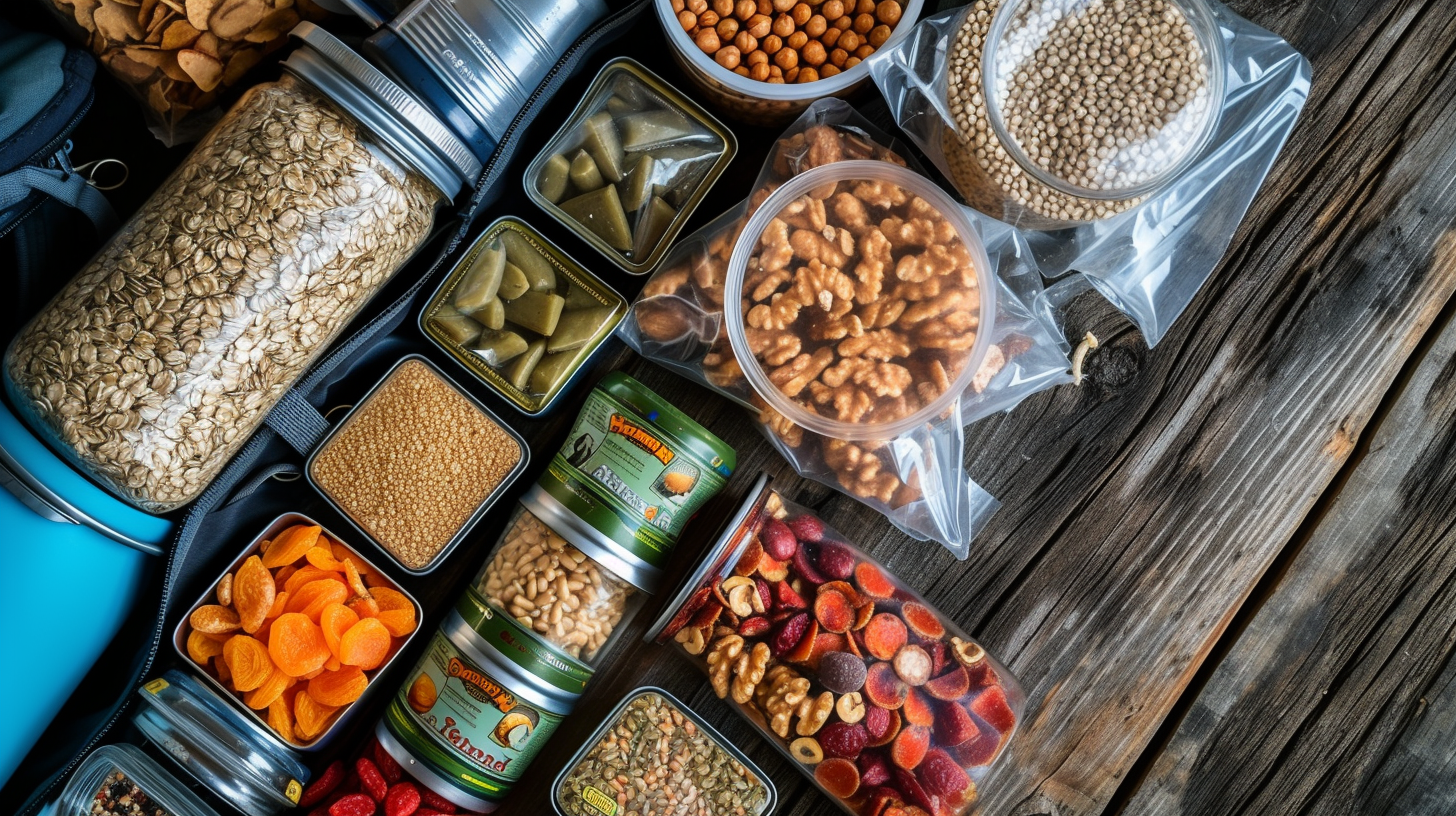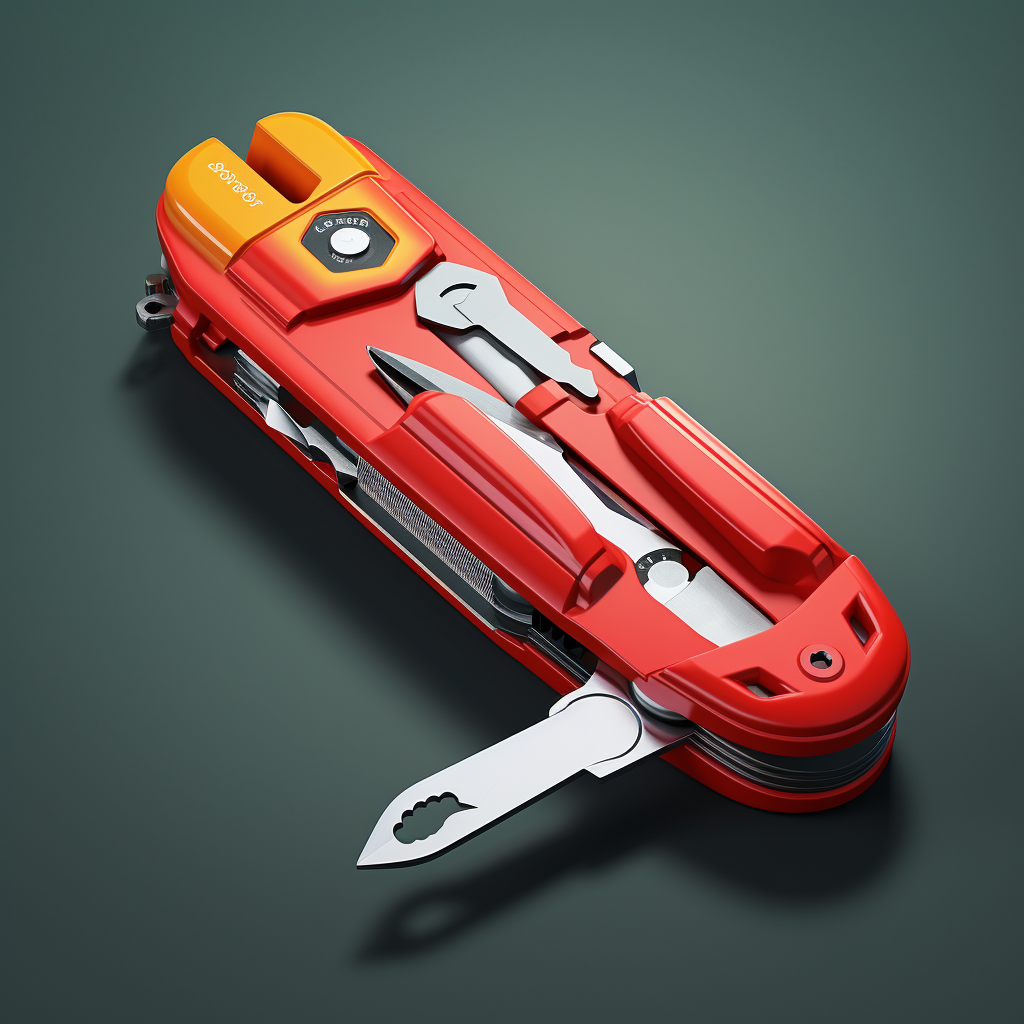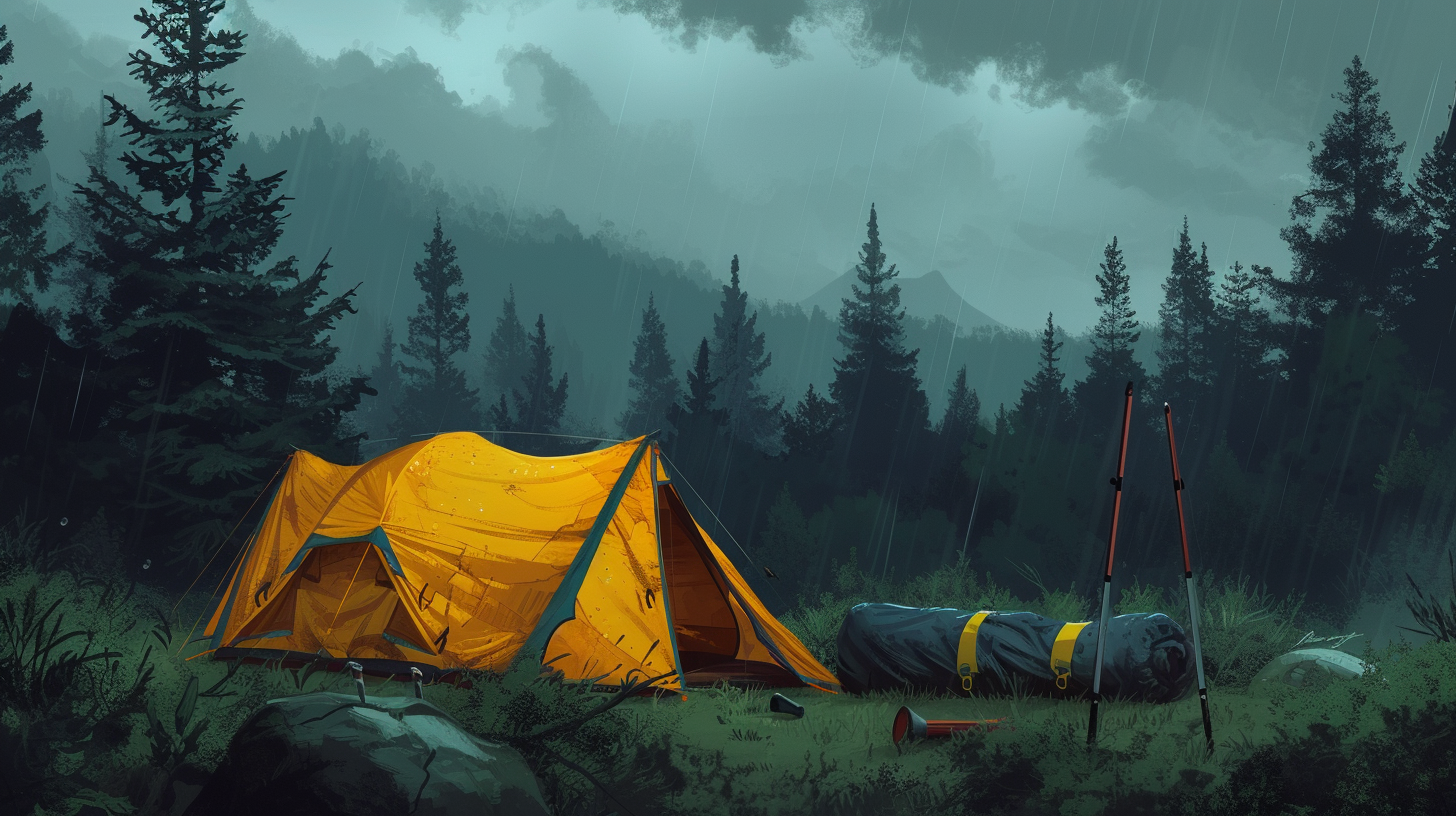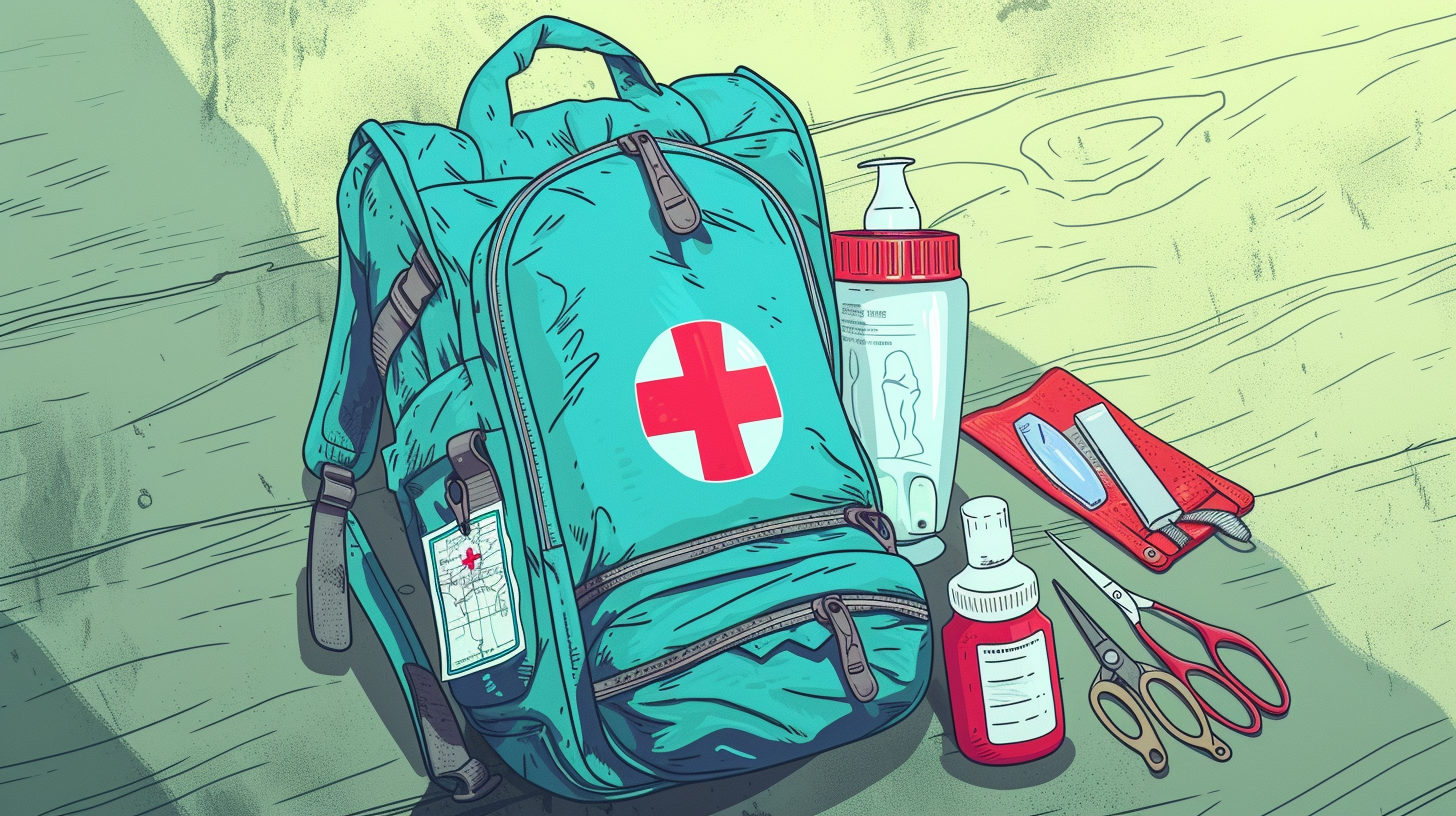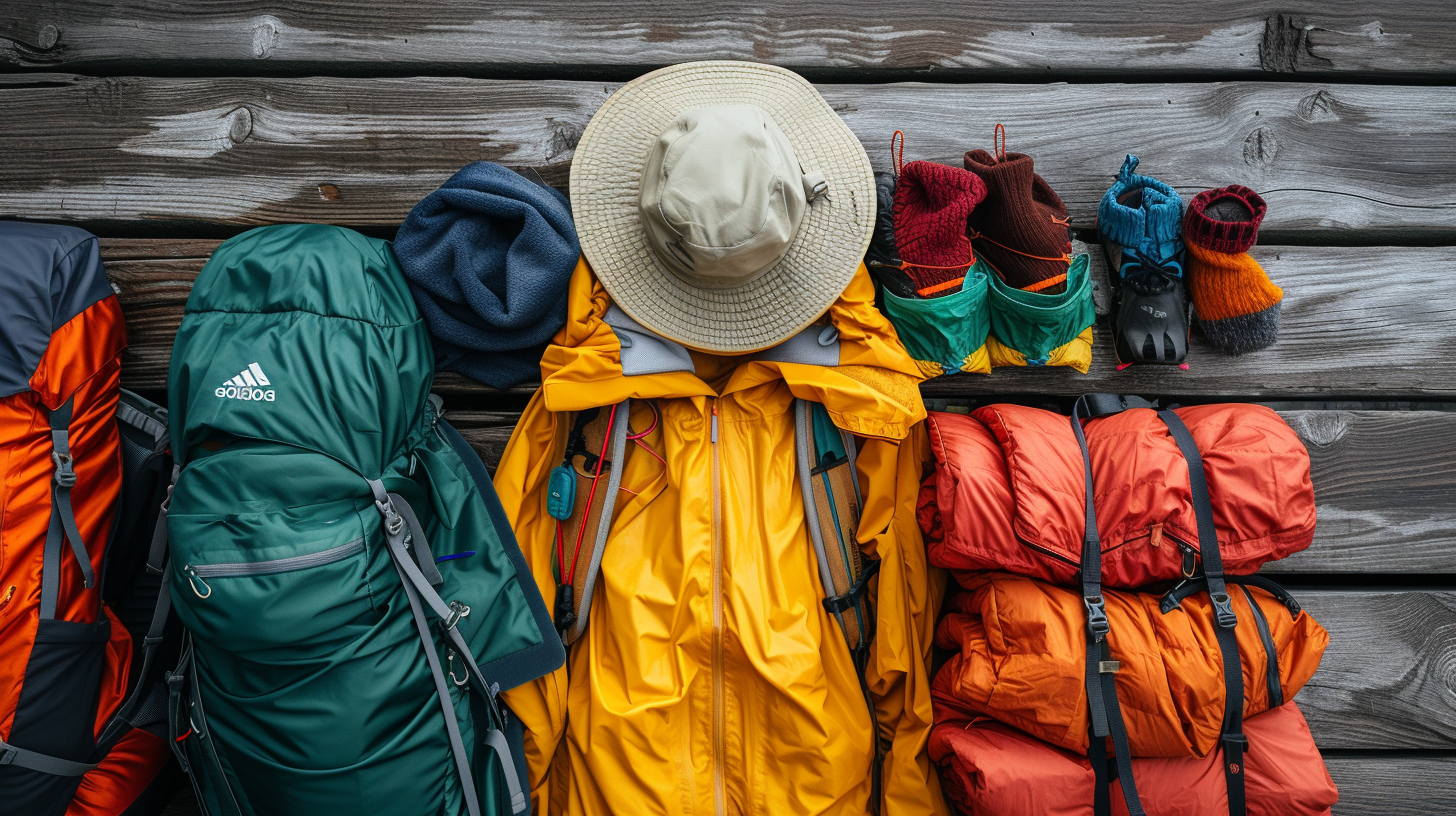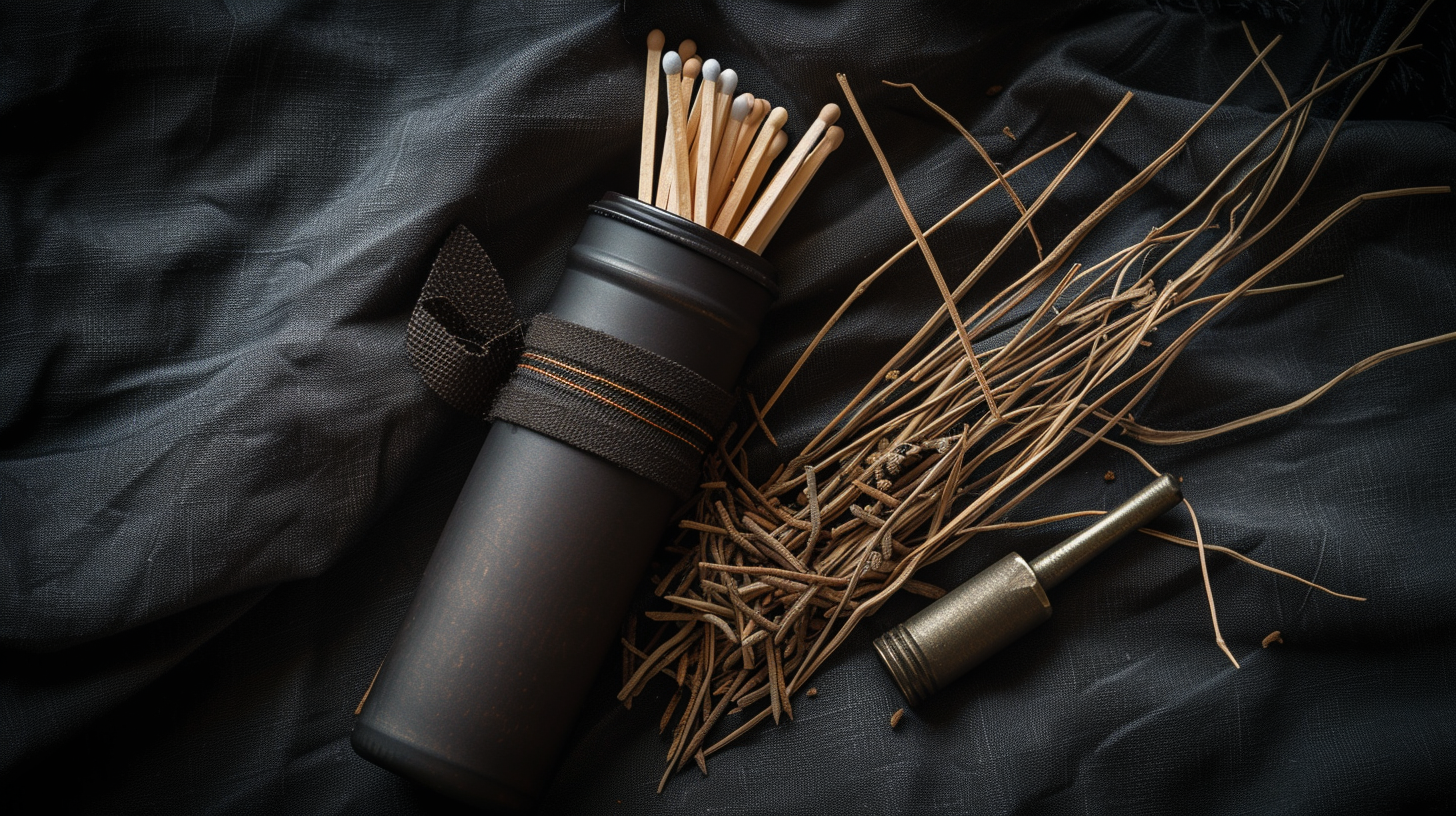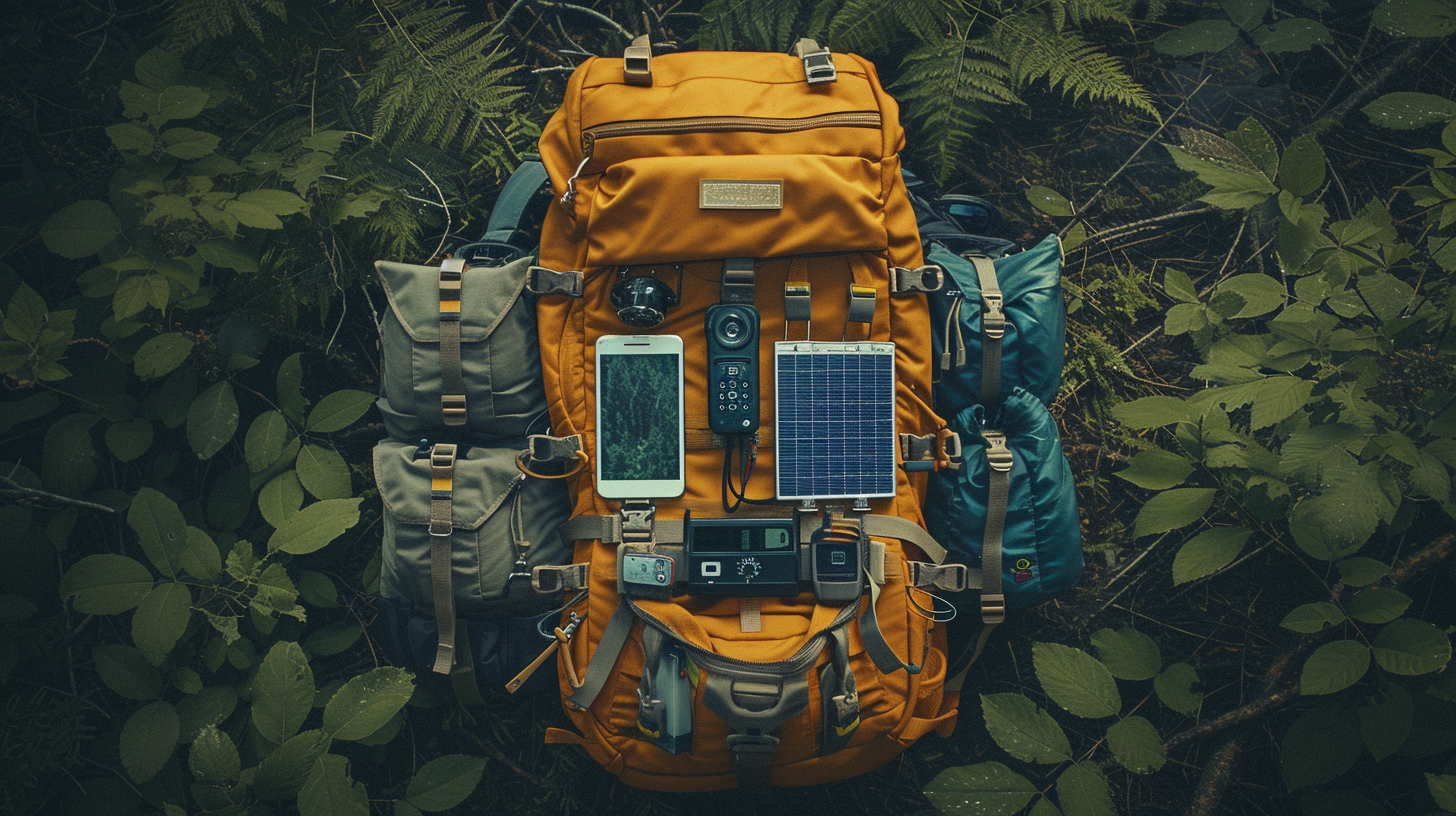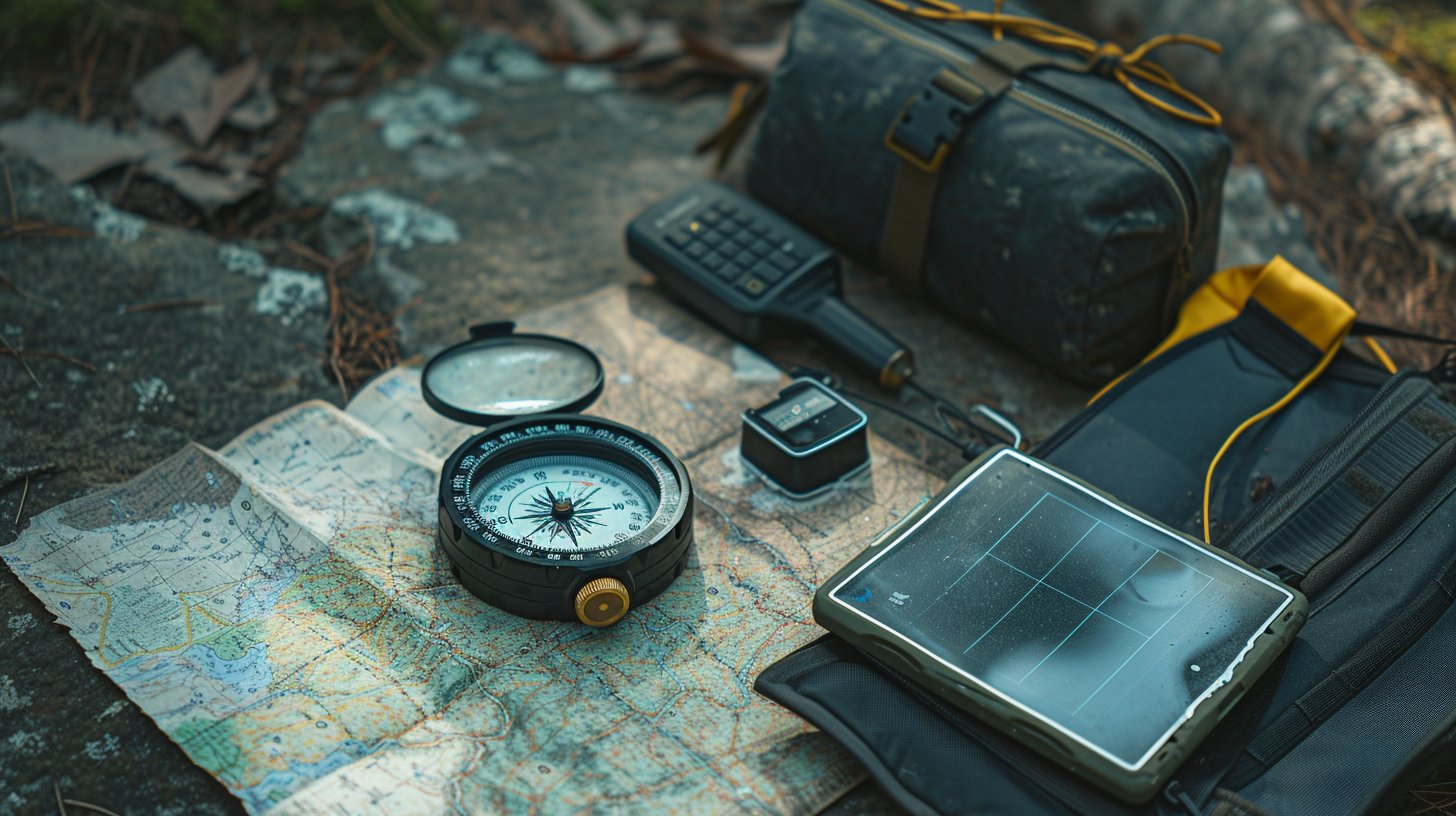While you might believe you’re fully prepared for any emergency, the composition of your SHTF bug-out bag could be the determining factor between mere survival and thriving in a crisis.
When you’re on the move, certain essentials can significantly enhance your resilience and adaptability. From a water filtration system that ensures access to clean drinking water, to nutrient-dense foods that keep your energy up without weighing you down, each item in your bag must serve a critical function.
Moreover, tools like a multipurpose tool and a durable shelter are non-negotiable for protection and practicality. And let’s not overlook the importance of a reliable fire starter, portable lighting, and navigation tools to keep you safe and oriented. Communication devices, while often underestimated, play a crucial role in keeping you connected with the outside world.
As we explore the top 10 must-have items for your bug-out bag, consider how each component not only serves a basic need but also fits into a broader strategy for survival and efficiency in unpredictable situations.
Key Takeaways
- Shelter and warmth are essential in a bug-out bag. Include items like a tarp/tent, sleeping bag, ground pad, wool blanket, and portable hammock.
- Water and hydration are crucial for survival. Carry a water filter or purification tablets, collapsible water bottle, water bladder, metal water bottle, and water filtration system.
- Food and nutrition should be considered. Pack MREs, energy bars, freeze-dried meals, a fishing kit, and a cooking stove.
- First aid and medical supplies are important for emergencies. Include a first aid kit, bandages, antiseptic wipes, pain relievers, and necessary prescription medications.
Water Filtration System
In any emergency, having a portable water filtration system is crucial to ensure you’ve got access to clean drinking water from almost any source. You’ll want to scout for a water filter that’s both portable and lightweight, yet robust enough to remove contaminants efficiently. This means choosing a system that’s a breeze to use and maintain, even in the most challenging situations.
Consider opting for a water filter with a high filtration capacity. This feature is vital as it allows you to provide clean water for an extended period, ensuring your hydration needs are met without constant worry. It’s also essential to prioritize a filtration system capable of purifying water from varied sources, such as streams and lakes. This adaptability can be a lifesaver.
Don’t forget to complement your water filter with water purification tablets for an extra layer of safety, and always have a Water Bottle or Hydration Pack handy. Aim for options that can hold at least one liter of water. Additionally, a collapsible water container can save space in your bag while ensuring you’re prepared to collect and store clean water whenever you find a source.
Nutrient-Dense Foods
As you’re packing your bug-out bag, it’s crucial to focus on nutrient-dense foods that’ll keep you energized and healthy in a survival situation.
You’ll need to understand the types of food that offer the most bang for their buck in terms of calories and longevity.
Let’s explore the best options for long-term storage, ensuring you have the energy to tackle whatever comes your way.
Essential Food Types
To ensure your survival and maintain energy during emergencies, it’s crucial to pack nutrient-dense foods in your bug-out bag. You’ll need food items that offer both sustenance and essential nutrients without taking up too much space. Here’s a list to help you prioritize:
- Dehydrated Meals/MREs: Compact and long-lasting, these are perfect for ensuring you have meals ready when water is available to rehydrate them.
- High-Calorie Protein/Energy Bars: For quick, accessible nourishment, nothing beats the convenience of ration bars and energy bars.
- Flavored Ration Bars: Besides offering essential energy, these make for a more enjoyable eating experience, which can be a morale booster.
Caloric Value Importance
After exploring essential food types for your bug-out bag, it’s vital to focus on why selecting items with high caloric value is critical for survival. In a survival situation, you might not have the luxury to hunt wild game or replenish food supplies frequently. Considering the human body can survive weeks without food, maximizing the caloric value importance of each item you pack ensures you maintain energy levels necessary for survival.
| Food Item | Caloric Value (per day) |
|---|---|
| High-calorie bars | High |
| Nuts & seeds | Moderate to High |
| Dried fruits | Moderate |
| Peanut butter | High |
| Canned fish | High |
Including nutrient-dense foods maximizes your energy output and ensures you’re well-equipped for any challenges ahead.
Long-Term Storage Tips
Storing your nutrient-dense foods properly ensures they’ll be ready when you most need them, offering a reliable source of energy and nutrition for survival situations. Here are long-term storage tips for the items I recommend:
- Vacuum Seal your quinoa, lentils, and chia seeds. This method not only preserves their freshness but also reduces bulk and weight, making them ideal for your bug-out bag.
- Place these vacuum-sealed packs in a waterproof bag to protect against moisture and extreme weather conditions.
- Rotate your stock regularly. Even the best storage methods can’t prevent natural degradation over time, so use and replace items periodically to maintain their nutritional value.
Following these tips ensures your nutrient-dense foods remain potent and accessible, regardless of the circumstances.
Multipurpose Tools
When you’re packing your bug-out bag, don’t overlook the importance of a multipurpose tool. Its compactness and portability ensure you’re not weighed down, while its durability and reliability mean it’s ready for any task.
Let’s explore what features make a tool essential, and why it deserves a spot in your emergency kit.
Essential Tool Features
Considering the unpredictable nature of emergencies, it’s crucial you include a multi-tool in your bug-out bag, ensuring it’s equipped with essential features like a knife, pliers, screwdrivers, and a can opener for versatility. This versatile tool not only simplifies tasks but also pairs well with other survival kit essentials, enhancing your preparedness.
Here are three additional items to complement your multi-tool:
- Fire Starter: Essential for warmth and cooking, a full tang fire starter ensures you’re never left in the cold.
- Super Glue: For quick repairs, from sealing minor cuts to fixing gear, super glue is a must-have.
- Fishing Line: Alongside your multi-tools, fishing line can serve multiple purposes, from actual fishing to makeshift repairs.
These items, when combined with a well-chosen multi-tool, ensure your survival kit is comprehensive and ready for any scenario.
Durability and Reliability
Given the critical role a multipurpose tool plays in survival situations, it’s essential to choose one that’s both durable and reliable, like a Leatherman or a similar high-quality brand. When you’re packing for emergency preparedness, the durability and reliability of your gear can make or break your ability to handle unforeseen challenges.
A good quality multipurpose tool is non-negotiable among bug out bag essentials. These tools are designed to withstand tough conditions, ensuring they’re ready whenever you need them. Opting for the best option means investing in something that won’t fail you when you’re fixing gear, preparing food, or performing any number of tasks in survival bags.
Compactness and Portability
While durability and reliability are key, it’s also crucial to ensure your multipurpose tool is compact and portable for efficient space management in your bug-out bag. Your survival hinges not just on what you carry but also on how easily you can carry it. A tool that embodies compactness and portability while serving various functions can be a game-changer in emergency situations.
Here’s what to look for:
- Lightweight and Durable: Opt for a tool that won’t weigh you down but can withstand harsh conditions.
- Multi-Functional: Your tool should include features like a knife, screwdrivers, and a can opener to save space in your go bag.
- Easily Accessible: Choose a tool that’s easily reachable and usable for shelter building, fire starting, food prep, and self-defense, enhancing its portability and utility in your bugout bag.
Durable Shelter
For your SHTF bug-out bag, packing a durable shelter that’s both lightweight and compact can make all the difference in survival situations. When you start making choices for your bag, you need to consider items that offer protection from the elements without weighing you down. A tarp or tent, combined with a sleeping bag, provides essential shelter and warmth, especially in cold weather.
| Shelter Item | Importance |
|---|---|
| Tarp/Tent | Provides a barrier against rain, wind, and sun. Essential for creating a safe space to rest. |
| Sleeping Bag | Keeps you warm during cold nights and acts as your primary source of warmth. |
| Ground Pad | Adds comfort and insulation from the cold ground, increasing the effectiveness of your sleeping bag. |
| Wool Blanket | Offers additional warmth and can be used independently in milder weather. |
Emergency First-Aid Kit
In any survival situation, having a well-stocked emergency first-aid kit can mean the difference between life and death. Your kit is your frontline defense not just for routine cuts and scrapes, but for more serious injuries that might occur, especially when professional medical help isn’t immediately available. Ensuring you have the right medical supplies at your fingertips could save your life or someone else’s.
When packing your emergency first-aid kit, consider these essentials:
- Wound Care Supplies: This includes bandages, gauze, medical tape, antiseptic pads, and cotton balls. Such items are crucial for cleaning and dressing wounds to prevent infection.
- Medications: Pack a variety of over-the-counter medications like pain relievers and antihistamines, alongside any prescription medications you might need. These can help manage pain and allergic reactions, providing crucial relief.
- Specialized Items: A tourniquet, QuikClot, and splints can be lifesavers in more severe cases, such as deep cuts or broken bones. They’re essential for controlling bleeding and immobilizing injuries until further help is available.
Weather-Appropriate Clothing
When you’re assembling your bug-out bag, don’t overlook the importance of weather-appropriate clothing.
Layering for temperature control ensures you’re prepared for any weather shift, while waterproof outerwear is essential for staying dry.
These items aren’t just about comfort; they’re crucial for your survival.
Layering for Temperature Control
To effectively manage your body’s temperature in varying conditions, it’s crucial to master the art of layering weather-appropriate clothing. Your bug out bag should contain items that enable layering for temperature control. This strategy not only keeps you comfortable but also supports personal hygiene by letting you change damp or sweaty layers, which is vital for long-term wear.
Here’s what should be in your bag:
- Lightweight, moisture-wicking base layers to keep your skin dry and regulate body temperature.
- Insulating layers like fleece or down jackets for warmth in colder conditions.
- Waterproof and windproof outer layers to protect against harsh weather.
Don’t forget at least one change of clothes, extra socks, and a hat to ensure you’re prepared for any weather scenario.
Waterproof Outerwear Essentials
As you prepare for any weather, don’t overlook the necessity of waterproof outerwear essentials in your bug-out bag. Choosing weather-appropriate clothing is crucial when putting together your SHTF bug-out bag.
A durable rain poncho and waterproof jacket are must-have items to shield you from heavy rain and wind. Don’t forget to pack extra pairs of moisture-wicking socks to keep your feet dry and prevent blisters.
Additionally, incorporating a warm hat and gloves can protect against cold and wet weather, ensuring you stay warm. Remember, waterproof pants are vital for keeping your lower body dry in wet conditions.
These waterproof outerwear essentials are indispensable for your bug-out bags, preparing you for any extreme weather scenario.
Reliable Fire Starter
Ensuring you have a reliable fire starter in your bug-out bag can be the difference between comfort and survival in emergency situations. When you’re in a pinch, the ability to start a fire quickly can provide warmth, a way to cook food, and even a signal for help. That’s why it’s essential to include dependable fire-starting tools in your kit.
Here are three must-have items to ensure you can always start a fire when you need to:
- Stormproof Matches: These matches are designed to withstand wind and rain, making them a reliable fire starter even in the toughest conditions.
- Magnesium Fire Scraper: A magnesium fire scraper can generate sparks to ignite tinder. It’s a durable, long-lasting option that works even when wet.
- Lighter and Petroleum Jelly: A classic lighter paired with petroleum jelly-coated cotton balls or laundry lint creates an easily ignitable fire source.
Including these items in your bug out bag checklist ensures you won’t be left in the cold. Remember, the ability to start a fire is fundamental in survival situations, making a reliable fire starter an indispensable part of your emergency kit.
Portable Lighting
When navigating through the dark, having portable lighting in your bug-out bag is a game-changer. It’s not just about seeing where you’re going; it’s about safety, efficiency, and comfort in challenging situations.
Among the 98 items in your bug-out bag, at least a few should cater to lighting needs.
Make sure to include an LED headlamp. It’s invaluable for hands-free illumination, letting you move, cook, or read maps in the dark without holding a flashlight.
A mini LED keychain is another essential. Its compact size belies its usefulness, providing light for quick tasks or emergencies without weighing you down.
Don’t overlook a light glowstick. It’s a fail-safe light source that lasts for hours, perfect for signaling your location or marking a trail.
For versatility, add a mini LED light to your kit. It can clip onto gear or clothing, illuminating your path or task at hand.
Lastly, pack some tea candles. They’re not just for light; they can also provide heat and a means to cook in a pinch.
Together, these items in your bug ensure you’re never left in the dark, whatever the circumstances.
Communication Devices
In any survival situation, staying in touch with others is crucial, and your bug-out bag should include several communication devices to make this possible. These devices not only ensure you can call for help or stay informed but also maintain crucial lines of communication with your group or family, aligning with your bug-out plan during an SHTF scenario.
Here’s a rundown of must-have communication devices:
- Cell Phone: Your primary lifeline to the outside world, a cell phone is indispensable. Ensure it’s charged and consider backup power options.
- Ham Radio: For when cell networks are down, a ham radio with a license allows for long-range communication. It’s a reliable contingency plan in any bug-out situation.
- Crank Power Charger with Signal Lights: This emergency device ensures your communication tools remain functional without relying on traditional power sources. Signal lights also serve as a non-verbal way to communicate your location.
Including these communication devices in your bug-out bag not only boosts your chances of survival but also ensures you’re prepared for the unpredictability of any SHTF scenario.
Navigation Tools
Having covered how to stay connected, let’s focus on how you’ll find your way with essential navigation tools in your bug-out bag. Building your bug-out bag list with navigation in mind saves a lot of time and ensures you’re prepared for any scenario. First things first, let’s break down the must-have navigation tools that will guide you during this crucial period of time.
| Navigation Tool | Purpose |
|---|---|
| Compass | Determining direction and orienteering |
| Maps | Navigating terrain, finding routes |
| GPS Device | Providing accurate location information |
A compass and local maps are your bread and butter for traditional navigation. They don’t rely on batteries or satellite signals, making them reliable over a long period of time. However, in today’s tech-savvy world, a GPS device can be a game-changer, offering precise location info and route guidance at your fingertips. Don’t forget, signaling devices like a signal mirror and whistle are also part of your navigation toolkit. They can be crucial for signaling for help or navigating over distances when visibility is low or in dense terrain. With these tools in your bug-out bag, you’ll be well-equipped to find your way, come what may.
Additional Items to Consider
These additional items complement the basic essentials in a bug-out bag, ensuring a more comprehensive preparedness for various survival scenarios.
- Sewing Kit: For repairing gear and clothing.
- Extra Prescription Glasses or Contact Lenses: If applicable.
- Notepad and Pencil: For taking notes or leaving messages.
- Safety Pins and Zip Ties: For quick fixes and fastening needs.
- Energy Supplements: Such as electrolyte tablets or powder.
- Insect Repellent: To keep away bugs and mosquitoes.
- Sun Protection: Sunscreen and a wide-brimmed hat.
- Spare Batteries: For all battery-operated devices.
- Fishing Kit: Includes line, hooks, and sinkers for food sourcing.
- Snare Wire: For small game trapping.
- Dust Masks or Respirators: For protection in polluted or dusty environments.
- Signal Flares: For emergency signaling over long distances.
Conclusion
In conclusion, when SHTF, having a well-packed bug-out bag isn’t just smart, it’s crucial. Make sure yours includes a stellar water filtration system, nutrient-dense foods, a versatile multipurpose tool, durable shelter, an emergency first-aid kit, a reliable fire starter, portable lighting, communication devices, and essential navigation tools.
Don’t underestimate the importance of being prepared. This kit could very well be your lifeline in a crisis, ensuring you’re ready for whatever comes your way.

